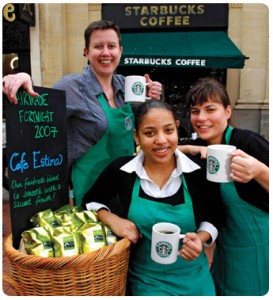As human beings, we are ruled by time. In every aspect of life, we seem to struggle against it to try and gain an advantage of some kind. For me this has been top of mind of late.
I started to think how time was affecting me (and my B2B clients) of late…
- Planning and Prep – The time necessary to properly plan Social Media programs is deceiving. This is due in large part to two factors.
- Doing it properly versus just jumping in. Developing a strategy that is aligned with the brand experience and integrated with other marketing/sales programs takes a lot of work. It is well beyond just making a Twitter or FaceBook account.
- Finding the right people. This goes well beyond all the smoke and mirrors of having a so called “Social Media expert”. Finding the right people to be involved including strategist, management, content writers, analysts, and researchers, not to mention third parties like partners and content contributors is very time consuming.
- Commitment – In my mind, this is the one that almost everyone has underestimated. Because of the nature of Social Media relationships, the medium demands much more time than one way communication channels. The difference is traditional communications (the ones we are all used to) work on a “burst” type model. You prep, send and watch results, much like chess – you have time to think about your next move. Social Media on the other hand, is constant and dynamic which means it is very difficult to automate around and needs constant human intervention of all kinds. In Social Media you have to think on your feet and that is very different and difficult for large enterprise.
- The Great Unknown – Social Media really is an unknown to almost every large enterprise and that means risk.
- Executive and management make decisions slower to try and understand what they are getting into; certainly the lawyers want to make sure the enterprise is not exposed.
- We are learning as we go. Contrary to what the self proclaimed gurus say, this is a complex medium that is continuing to evolve rapidly. The unknown factor means that large enterprise should be using a cautious, risk managed approach; one that grows organically and is constantly adapted to fit social and community need.
For me personally, time hasn’t been kind. I am admittedly struggling to find balance on 5 crtiical areas of my business and personal life.
- My family and being a Dad to three small children.
- My business and my clients (and demand for services is increasing, not decreasing)
- My book (and with a publishing deal pending, the demand on that is going to increase significantly)
- My blog (unfortunately lower in the totem pole than i would like)
- My personal life (making time to work out and look after me)
.
What I am finding is that balance is being created naturally as I re-align my priorities and adapt my work habits to accommodate positive change.
- I am using the blog to support the book and my clients which increases the priority of the blog and enables me to accomplish 3 goals through one channel.
- I have begun to doing very active things with my kids incorporating exercise into almost everything. This has worked so well on many fronts as the kids love being active with me and I get even more time with them.
- I am really being fussy about the projects I take on and have leveraged a couple great people to help on current projects. End result is a time gain for me without affecting the results to my clients.
.
As I work with clients, I am working with them to help find natural balance to make time our ally instead of an enemy. Maybe time isn’t an enemy after all – maybe it was my perspective that was flawed…



